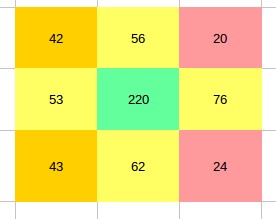If you read my last few posts about DIY LED lamps built using 150W warm white LED cobs (which do not require an independent driver) you might have been excited by some of my claims. I previously stated that you could probably get around a 1000W HPS equivalent using just two of these lamps, which meant an energy saving of around 60% relative to the HPS equivalent. However to really verify these claims I wanted to get new PAR and lux meters to perform proper PAR and lux measurements. The results my friends, are disappointing.

Previously I thought that these lamps were close to half of an HPS equivalent based on initial lux measurements. At the same distances, directly below the lamp, I could get around half the lux equivalent of your average HPS lamp, I thought from the warmer spectra of these white warm cobs that the PAR contribution would be significantly higher than that of a regular HPS but it seems that – due to the inefficient use of a white phosphor to produce the spectra – basically the PAR efficiency is equal to that of an HPS lamp.
The PAR (Photo-synthetically Active Radiation) basically measures the number of photons that can be used in photosynthesis that you get per square meter per second off a given light source. I will write a more in-depth post about PAR in the future, but it basically tells you the plant-usable photon flux you get. It is therefore measured in umol*s-1*m-2.

I performed classic PAR measurements with a 150W lamp 15 inches above a target center with measuring points around a 4 square feet area (to compare with the variety of HPS measurements you can find here). The results, in the first image in this post, show you the map of PAR values across the 2 feet by 2 feet area. This shows that the lamp is basically giving you 1466 umol*s-1*m-2 per 1000W at its highest point, which is below the PAR/watt of even the poorest HPS models. With this lamp model using 150W cobs you will therefore need at least 7 lamps to reach the same equivalent of a 1000W HPS in terms of actual photo-synthetically active radiation.
Not only that but without any focusing or dispersing elements the PAR decay as a function of light distance is much more dramatic than for regular, reflector mounted HPS lights. With all these information it now seems clear that these warm white light LED cobs are NOT a good HPS replacement.
However the idea of the zip tie lamp is not dead! I found out that there are actually “full spectrum” LED cobs that are specifically designed to be grow lights (so basically a combinations of red and blue LED lights). These cobs come in 20, 30 and 50W formats and they should have a much more favorable PAR than the 150W warm white LED cobs. I have now ordered some of these cobs (here) to rebuild my zip tie lamp and see if I can indeed get a much better PAR/watt and watt/dollar compared with normal HPS lights.






18 Comments